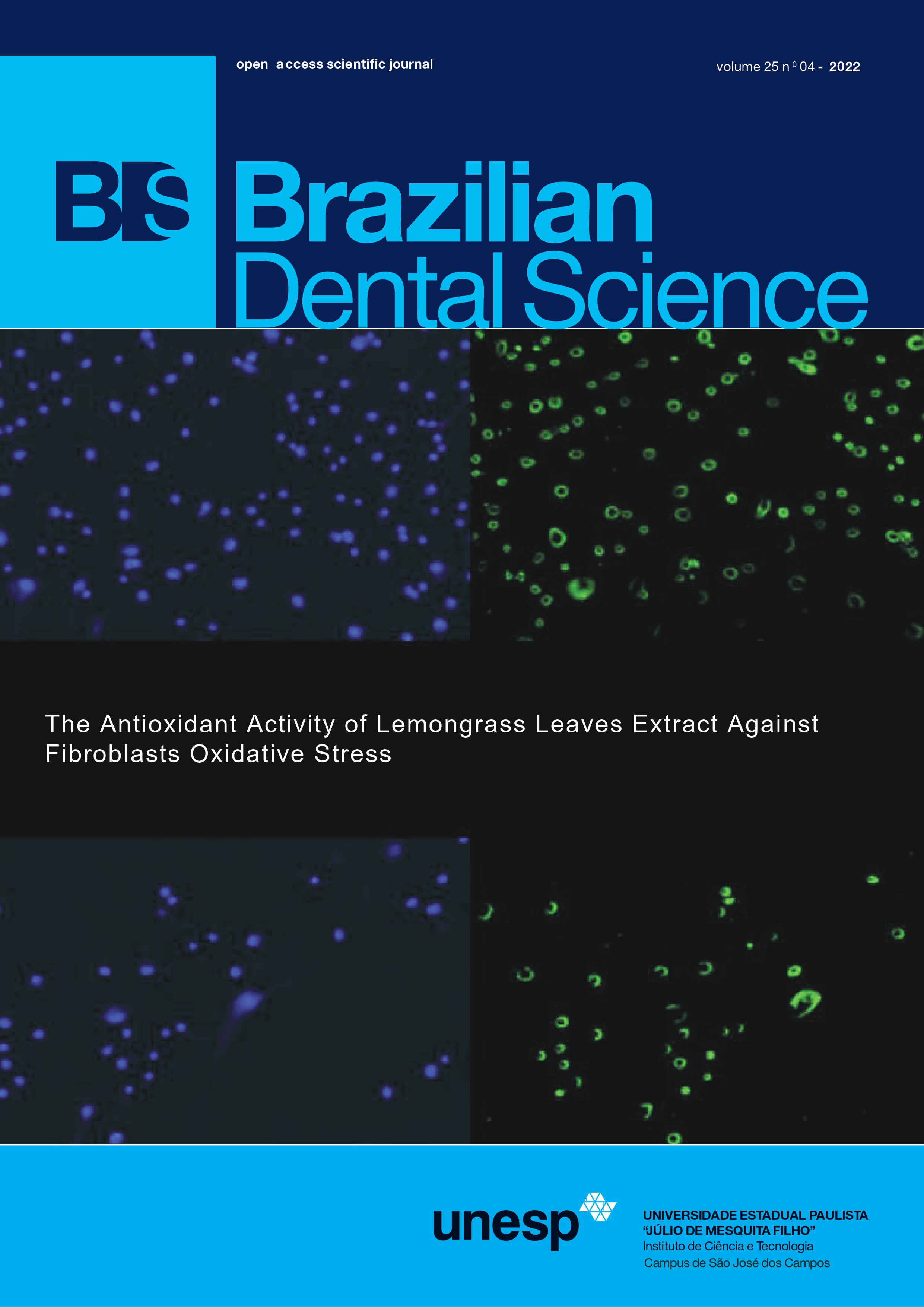The antioxidant activity of lemongrass leaves extract against fibroblasts oxidative stress
DOI:
https://doi.org/10.4322/bds.2022.e3434Abstract
Objective: The purpose of this research is to assess the antioxidant activity of lemongrass leaves extract in terms of lowering ROS generation and its effect on the viability and proliferation of fibroblasts under oxidative stress. Material and Methods: The antioxidant activity was measured using the DPPH method and the ROS assay was carried out by fluorescent H2DCFDA staining. Viability and proliferation assays were performed using the Cell Counting Kit-8 (CCK-8) and was read at 450 nm using microplate reader. The groups were divided into 8, namely fibroblasts without treatment (comparison group), fibroblast induced by H2 O2 (negative control), fibroblast with H2 O2 then treated with ascorbic acid (positive control), and fibroblast with H2 O2 then treated with lemongrass leaves extract at various concentrations (10, 20, 30, 40, and 50 ppm). Results: The results showed that the antioxidant activity of lemongrass leaves extract had an IC50 value of 64.17 ppm. ROS production were reduced by the LgLE of all concentrations if compared with negative control (p=0.819). LgLE can maintained the fibroblast viability with 10 ppm of LgLE was the most optimum concentration (p<0.05). LgLE can induced the proliferation of fibroblast, with the most effective was at 24 h of observation (p><0.05). . LgLE can induced the proliferation of fibroblast, with the most effective was at 24 h of observation (p<0.05). Conclusion: Lemongrass leaves extract has a strong antioxidant activity that can reduce oxidative stress and increase the viability and proliferation of fibroblasts with the optimum concentration is at 10 ppm.
KEYWORDS
Antioxidant activity; Fibroblast; Lemongrass; Oxidative stress; Reactive oxygen species.
Downloads
Downloads
Published
How to Cite
Issue
Section
License
Brazilian Dental Science uses the Creative Commons (CC-BY 4.0) license, thus preserving the integrity of articles in an open access environment. The journal allows the author to retain publishing rights without restrictions.
=================




























